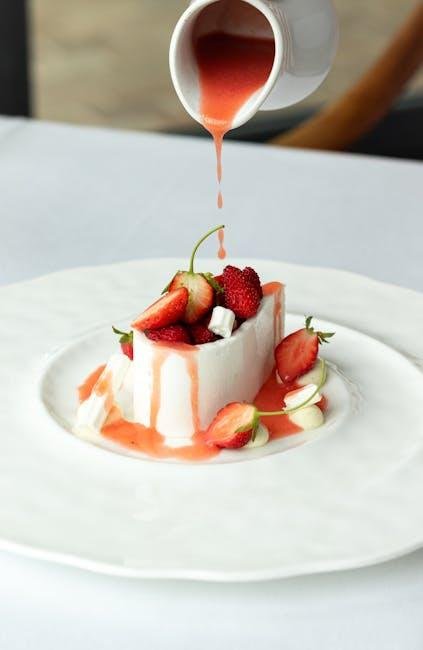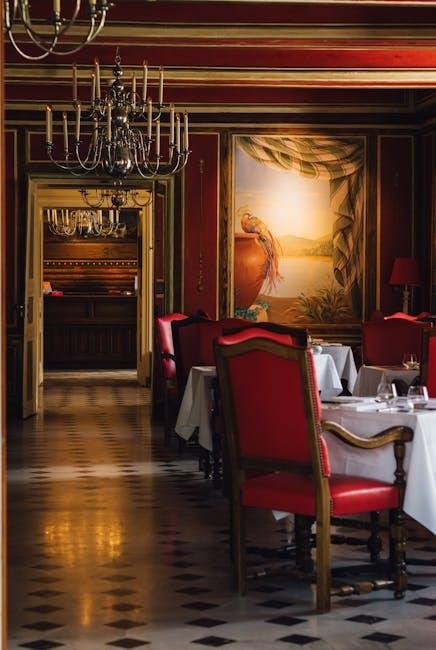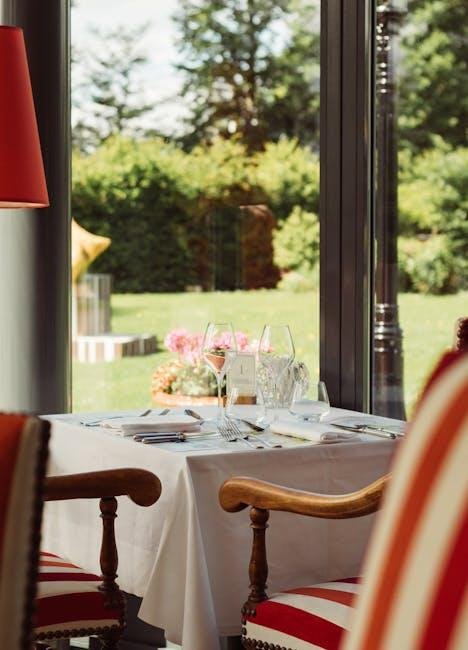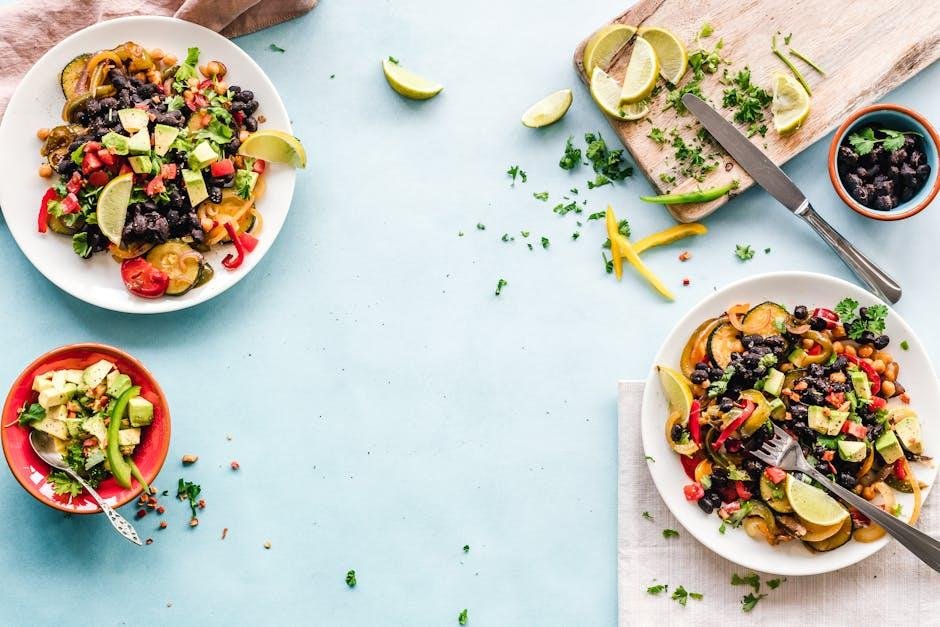Introduction: Savoring Simplicity in French Cuisine
In the heart of every culinary tradition lies a delightful paradox: the simplest dishes often carry the most profound flavors and stories. French cuisine, renowned for its elegance and sophistication, may seem daunting to those daunted by gourmet techniques and intricate recipes. However, beneath the layers of complexity lies a treasure trove of simple yet elegant culinary wonders. This article invites you on a journey to explore the enchanting world of French cooking, tailored specifically for beginners. From classic bistro favorites to easy-to-master sauces, we will demystify the art of French cuisine, proving that anyone can create dishes that not only tantalize the taste buds but also bring a touch of joie de vivre to the dining table. Whether you’re a novice eager to explore new flavors or simply looking to elevate your home-cooking repertoire, join us as we uncover how the essence of French culinary tradition can be accessible, inviting, and achievable for all.
Exploring the Foundations of French Cuisine
French cuisine is a tapestry woven from a rich history of regional diversity, culinary techniques, and an recognition for fresh, quality ingredients. At the heart of this culinary tradition lies a commitment to simplicity and balance,allowing the natural flavors of each ingredient to shine through. Essential elements that define this gastronomic art form include:
- Seasonal Ingredients: Emphasizing the importance of using ingredients at their peak freshness.
- Cooking Techniques: Mastery of methods such as sautéing, poaching, and braising.
- Balance of Flavors: The harmonious interplay of sweet, salty, sour, and bitter.
- Presentation: An eye for aesthetics, ensuring that every dish is a feast for the eyes as well as the palate.
As culinary enthusiasts embark on their journey into the world of French cooking, understanding these foundational principles can transform everyday meals into unusual experiences. Starting wiht staple ingredients, one can explore their versatility in classic dishes. Consider the following basic elements:
| Ingredient | Usage |
|---|---|
| Herbs de Provence | Enhances roasted meats and vegetables. |
| Shallots | Provides a subtle onion flavor in sauces and dressings. |
| Butter | Key ingredient for cooking and finishing dishes. |
| Garlic | Adds depth to many savory meals. |

Essential Ingredients for Timeless French Dishes
To master the art of French cuisine, one must focus on a few key elements that define its depth and character. Incorporating fresh herbs like basil,thyme,and parsley can transform a simple dish into a fragrant masterpiece. Additionally, quality oils such as extra virgin olive oil or nutty walnut oil serve as a gorgeous foundation for dressings and marinades. Completing this palette, premium vinegars such as balsamic or white wine vinegar provide a tangy contrast that elevates flavors. Here are a few essential ingredients that are essential:
- Butter – The cornerstone of rich sauces and pastries.
- Cheese – From creamy Brie to pungent Roquefort, cheese adds complexity.
- Garlic – A staple that enhances both flavor and aroma in countless recipes.
- Stock - Homemade vegetable or chicken stock creates a layered base for soups and sauces.
understanding the importance of these ingredients is the gateway to creating authentic French dishes. As a notable example, shallots provide a delicate sweetness, perfect for sauces and dressings, while cognac can introduce a sophisticated depth to stews and sauces. To illustrate how these staples work in harmony,consider the following table highlighting popular French dishes and their essential ingredients:
| Dishes | Key Ingredients |
|---|---|
| Coq au Vin | Red wine,chicken,mushrooms,lardons |
| Ratatouille | Aubergine,zucchini,bell peppers,tomatoes |
| tarte Tatin | Apples,pastry dough,caramel,butter |

Techniques to Elevate Your Cooking Skills
To transform your culinary skills, begin with the fundamental techniques that form the backbone of French cuisine. Mastering the art of mise en place—the practice of gathering and preparing all ingredients before cooking—can substantially enhance your efficiency and creativity in the kitchen. Emphasize the following techniques to elevate your cooking:
- Sautéing: Learn the perfect heat control to achieve a beautiful sear on meats or vegetables.
- Emulsification: Experiment with dressings and sauces, such as vinaigrettes, to create smooth mixtures.
- Knife Skills: Improve your chopping and slicing techniques for consistency in presentation and cooking.
- Braising: Understand this slow-cooking method to bring out rich flavors in tougher cuts of meat.
Once you are comfortable with these foundational skills, delve into flavor combinations that embody the elegance of French cooking. Explore the importance of aromatics and seasonings, and consider a simple flavor pairing table to inspire your dishes:
| Aromatic | Flavor Pairing |
|---|---|
| Garlic | Rosemary |
| Shallots | Thyme |
| Leeks | Parsley |
| Onions | Sage |
By incorporating these techniques and understanding the art of flavor pairing, you will be well on your way to cultivating an impressive repertoire of dishes that celebrate the simplicity and elegance of french cuisine.

Delightful Recipes for every Occasion
Exploring French cuisine doesn’t have to be daunting, especially for beginners. The beauty of this culinary tradition lies in its focus on fresh ingredients and straightforward techniques that yield impressive results. Consider trying Coq au Vin, a simple dish that blends chicken with mushrooms, red wine, and aromatic herbs, resulting in a richly flavored masterpiece. For a lighter option, Ratatouille is a fantastic vegetable medley that showcases the beauty of seasonal produce, making it both nutritious and vibrant.
Don’t forget the importance of serving options that complement these dishes perfectly. Pair Coq au Vin with a side of creamy mashed potatoes or classic French bread to soak up the flavorful sauce. for Ratatouille, a light salad with mixed greens and a simple vinaigrette can enhance the freshness of the meal. Here’s a fast table of suggested side dishes:
| Dish | Suggested Side |
|---|---|
| Coq au Vin | Mashed Potatoes |
| Ratatouille | Mixed Green Salad |
Wrapping up
As we conclude our journey through the world of French cuisine, we hope you’ve discovered that cooking elegant dishes at home doesn’t have to be an elusive dream. With just a few basic techniques, a dash of creativity, and a pinch of passion, anyone can craft meals that resonate with the charm and sophistication of France.
Remember, every great chef started with a single recipe, gradually mastering the art of flavor, presentation, and technique. Whether it’s a simple ratatouille or a delicate crème brûlée, embracing the fundamentals of French cooking can transform your kitchen into a culinary haven.
So don your apron, gather your ingredients, and let the spirit of French cuisine inspire you. Bon appétit!




